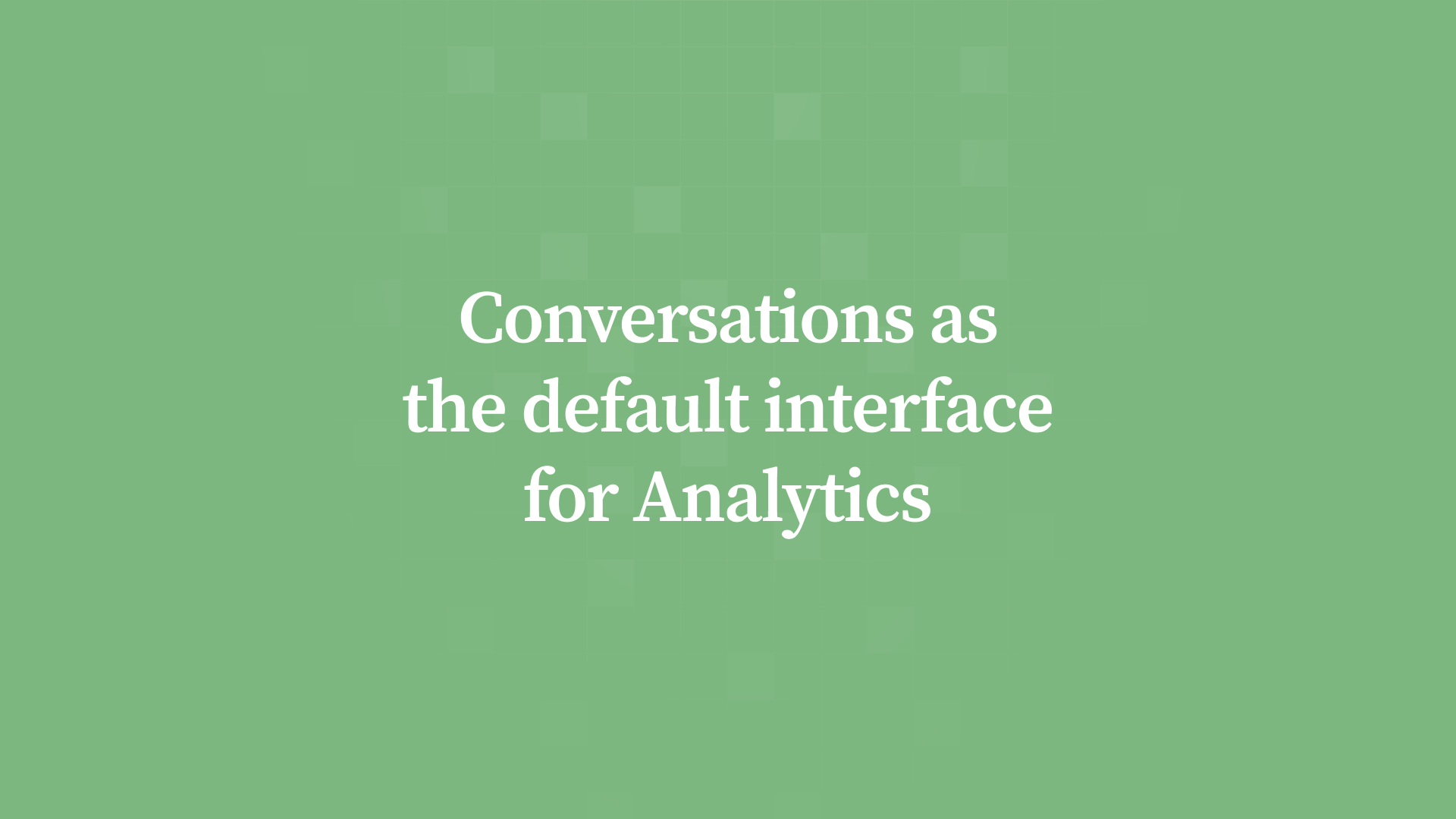How AI Conversational Interfaces Are Revolutionizing Self-Service Analytics
Conversational AI is transforming the future of data analytics and business intelligence by replacing dashboards with dialogue. Instead of waiting on data teams, users can now ask questions in plain English and receive instant, accurate insights - thanks to AI tools for data analysis, predictive analytics, and no-code self-service BI platforms. This post explores how AI-powered self-service analytics democratizes data access, compares self-service BI vs traditional BI, and highlights the most effective use of AI in enterprise analytics. Learn how generative AI and AI agents for data analysis make analytics faster, more innovative, and accessible to everyone — even non-technical users.


In the world of BI, AI data analytics is rapidly reshaping how organizations extract insight from data. Rather than relying solely on dashboards, the next frontier is conversational AI interfaces, where users simply ask questions and receive insight in natural language. This evolution unlocks self-service analytics, enabling non-technical users to benefit from AI predictive analytics, augmented analytics tools, and no-code data analytics without waiting on data teams.
In this post, we’ll show how conversational AI becomes the new default interface for analytics, compare self-service BI vs traditional BI, and explore how to get started using AI tools for data analysis in your organization.
The Analytics Interface Problem
Why Traditional BI Falls Short
Dashboards and static reports are great for monitoring; they tell you what happened. But when business users ask “why did this happen?” or “what happens if we change X?”, static BI tools often fail.
Analytics demands iteration, hypothesis testing, follow-ups, and exploration.
When data teams were the gatekeepers of insight, everything required technical overhead: writing SQL, building custom visualizations, or scripting transformations. That created bottlenecks and limited access to insight.
Conversational AI as the New Layer
The promise of an AI agent for data analysis and generative AI tools for data analysis is that the conversation becomes the interface. Rather than navigating dashboards or building queries, users simply ask a question:
“Why did user churn increase last quarter?”
“Show me retention trends for our VIP customers by region.”
“What’s the projected sales growth if we raise prices 5%?”
Under the hood, an AI model maps that input into queries, interprets results, and optionally refines follow-ups, all in real time. This is the essence of real-time AI analytics tools and the most efficient real-time AI analytics tools.
Key Concepts & Benefits
Self-Service Analytics & Self-Service BI
- What is self-service analytics? It allows business users to explore and analyze data without help from engineers or analysts via intuitive tools or natural interfaces.
- The future of Self-service BI vs traditional BI. Traditional BI relies on a centralized data team; self-service BI distributes the power of insight to business users. This accelerates decision-making, democratizes data, and reduces backlog.
AI + Analytics: Core Use Cases
- AI predictive analytics: Use machine learning models to forecast trends (e.g., demand forecasting, churn prediction) and embed predictions directly into conversational workflows.
- Augmented analytics tools for non-technical users: These tools blend automated insights, recommendations, and narrative explanations, making insights accessible without deep technical expertise.
- No code data analytics: Enable users to build queries, filters, or even predictive models without writing code, often via a drag-and-drop UI or natural language.
- How to use AI in data analytics: Hybrid analytics combines traditional BI + AI-enabled conversational layers. You continue to support dashboards and manual exploration, while also augmenting them with natural language interfaces and automated insight generation.
Why Organizations Adopt These Tools
- Speed & agility: Business users don’t have to wait for engineering or analytics teams.
- Broader adoption: More people can engage with data, not just those with technical skills.
- Reduced backlog: Central data teams can focus on complex problems while routine questions are self-serve.
- Consistency & governance: Conversational AI wraps around a governed data layer, ensuring correctness, lineage, and access control.
Why We Built Zenlytic’s Conversational Interface
At Zenlytic, we've found that the most valuable insights come not from dashboards themselves, but from the conversations people have about them. With that in mind, we built Zoe, an AI data coworker, to be the default interface, not as a gimmick, but as the natural extension of how analytics is really used every day.
- No replacement of dashboards: charts and dashboards are still necessary for monitoring and visual storytelling.
- Conversational front door: Most users start by asking a question; Zoe handles the query, follows up for clarifications, and surfaces charts as part of the response.
Speed, context, and consistency: With AI handling the heavy lifting, each conversation is fast, accurate, and consistent across users.
By making conversation the interface, we transform analytics from a technical tool into a strategic conversational partner.
Dashboards were designed for monitoring, not exploration. Analytics is dynamic. It is a process of asking questions, interpreting information, and uncovering meaning. Yet most analytics still rely on static, outdated interfaces. It is time for a better experience, and we believe that experience should feel like a natural conversation. Read More.


